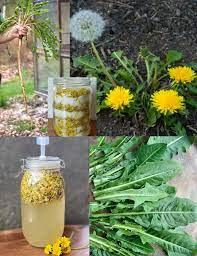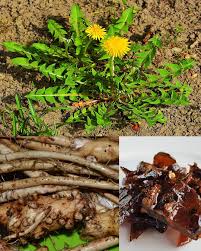Dandelions, often seen as simple weeds with bright yellow flowers, are much more than meets the eye. While their sunny blooms capture our attention, the real value of the dandelion lies beneath the soil, in its roots. This article explores the many reasons why dandelion roots are the unsung heroes of the plant and why they should be appreciated for their diverse benefits.
Understanding the Dandelion’s Anatomy
To fully appreciate the significance of dandelion roots, it’s important to first understand the structure of the plant. Dandelions (Taraxacum officinale) are perennial herbs from the Asteraceae family. They are composed of several parts, each playing a key role in the plant’s lifecycle and its usefulness to humans.
- Leaves: Rich in vitamins A, C, and K, as well as minerals like potassium and calcium, dandelion leaves are a nutritious addition to salads, teas, and even cooked dishes.
- Stems: The stems contain a milky latex sap, traditionally used in folk medicine for its potential healing properties.
- Flowers: Dandelion flowers serve as a crucial nectar source for pollinators and are used in making dandelion wine and herbal infusions. They also symbolize resilience and hope in many cultures.
- Roots: Dandelion roots, however, are the most valuable part, offering a range of medicinal, culinary, and practical applications.
The Medicinal Benefits of Dandelion Roots
Dandelion roots have been used in traditional medicine for centuries due to their remarkable health benefits:
- Liver Health: Dandelion roots are known for their liver-cleansing properties. They stimulate bile production, which aids digestion and detoxification. Additionally, they act as a diuretic, helping flush toxins from the body.
- Digestive Support: Dandelion root tea is commonly used to soothe upset stomachs and relieve constipation, promoting a healthy digestive system.
- Rich in Antioxidants: Packed with antioxidants like beta-carotene and polyphenols, dandelion roots help neutralize harmful free radicals, reducing the risk of chronic diseases and supporting overall health.
- Anti-Inflammatory: The compounds in dandelion roots may help reduce inflammation, providing relief from conditions like arthritis and other inflammatory diseases.
- Cancer Prevention Potential: Early research suggests that dandelion root extract may have the ability to slow the growth of cancer cells, making it a potential complementary treatment.

Culinary Uses for Dandelion Roots
Beyond their medicinal properties, dandelion roots also offer versatility in the kitchen. Here are some ways to incorporate them into your meals:
- Roasted Dandelion Root Coffee: Roasted dandelion roots can be ground and brewed into a rich, caffeine-free alternative to coffee, with a robust, earthy flavor.
- Dandelion Root Chips: Thinly sliced dandelion roots can be roasted or fried to make a healthy snack, offering a unique, nutrient-packed alternative to traditional potato chips.
- Dandelion Root Soup: Dandelion roots can be boiled or blanched and added to soups and stews for a savory, earthy flavor.
- Dandelion Root Salad: When boiled or blanched, dandelion roots can be incorporated into salads, providing a crunchy texture and distinct flavor.
Conclusion
While dandelions are often dismissed as mere weeds, their roots are a treasure trove of health benefits, culinary uses, and even medicinal remedies. These unassuming underground gems play a pivotal role in enhancing our well-being and offering delicious, nutritious alternatives in our diets. The next time you encounter a dandelion in your yard, take a moment to appreciate the hidden wonders beneath the surface. Dandelion roots are truly the most important part of this remarkable plant.
